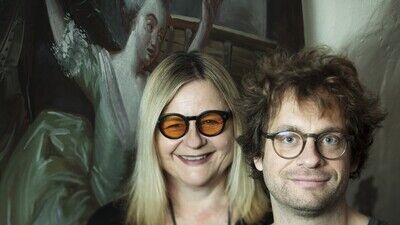VF: And when it comes to the pressure of functioning in a society and doing the work which is required [of you], we [wanted to depict] the real people who actually did the work. That feels more real and relatable than a movie about nobility or kings.
SF: For example, in the fishing scenes, those are all real fishermen. This specific [style of] carp fishing has been done in the same way since the 13th century, so those people essentially do the same thing the same way as people would’ve done 300 years back. They’re not interested in lecturing, they’re just doing what they do. That’s what makes [the film] feel less like a history lesson, because you’re observing people just doing what they do.
As an American, something I was thinking about [watching this film] is that shooting historical films in Europe is an advantage, because you have all these lovely locations.
SF: In Austria, there are structures that are very old, and there are quite a few of them. Unfortunately, most of them have been renovated, so it’s hard to make them look as if they were [old]. They’re too beautiful.
VF: We also have streets with concrete and electricity. So it was actually difficult to find the stone house [in the film] — it’s close to the Czech border, which until 30 years ago was still [behind] the Iron Curtain and kind of a no man’s land. That’s why there are still old houses there that haven’t been renovated. It’s a very rural area.
SF: We just had to make it safe enough to actually shoot there, because these were more like woods than houses. But film makes everything look more light and beautiful.
VF: Even in terms of the execution place [at the beginning of the film] with the columns — this is a real place. In Austria, they still exist. We have, I don’t know, 10 or 15 old execution places hidden in the woods.
But [this] was a co-production with Germany, and they destroyed all their execution places. So the second one we had to build, which was strange because in Austria, we had 10 more places [to choose from]. But if you get money from Germany to make a movie, you also have to spend money there. So we had to shoot that in Germany, and had to build the execution place [at the end of the film].

